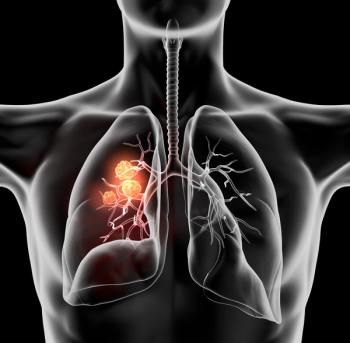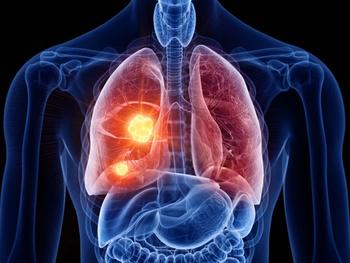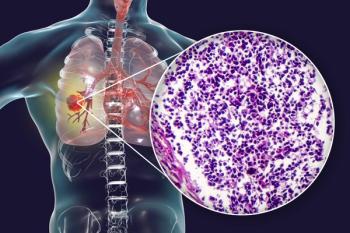
Targeting AXL Protein Could Overcome Resistance to Erlotinib in NSCLC
New research now suggests that targeting AXL kinase could reduce the resistance to EGFR-targeted tyrosine kinase inhibition, and allow further response to EGFR-targeted therapies in lung cancer.
Non–small-cell lung cancer (NSCLC) patients with EGFR mutations often respond well to EGFR-targeted tyrosine kinase inhibition, but resistance to these agents inevitably develops. New research now suggests that targeting AXL kinase could actually reduce that resistance, and allow further response to EGFR-targeted therapies in lung cancer.
“We believe our discovery is very promising,” said the new study’s senior author Trever G. Bivona, MD, PhD, of the University of California, San Francisco, Helen Diller Family Comprehensive Cancer Center, in an email to CancerNetwork. “It could allow us to cure more patients with lung cancer by overcoming resistance to the FDA-approved lung cancer therapy erlotinib.” The new study was
Bivona and colleagues conducted in vitro studies of human NSCLC tumor cells with mutations in the EGFR gene, and found that the receptor tyrosine kinase AXL was highly overexpressed in tumors that had acquired erlotinib resistance. Among 17 tumors with erlotinib resistance, 15 had higher AXL expression than control tumors. To confirm the utility of targeting the AXL protein, the researchers then showed that inhibiting AXL in mice restored sensitivity to erlotinib. “The data show that AXL was required for erlotinib resistance in this in vivo model,” they wrote.
To further validate AXL they measured the protein’s expression in 35 human NSCLC cell specimens, both before treatment with erlotinib or gefitinib and after resistance was acquired. Compared to pretreatment measurements, 7 of 35 samples showed twofold or greater AXL expression after development of resistance.
“Our analysis of the clinical specimens shows that AXL upregulation is the second most common mechanism by which resistance is acquired to TKIs (after EGFR p.Thr790Met alteration) in EGFR-mutant NSCLCs and has been validated using primary human data,” the authors wrote, adding that these results indicate for the first time that AXL can be considered a biomarker for acquired resistance to EGFR-targeted therapy.
Some unanswered questions include the mechanisms by which AXL activation occurs: there appears to be a role for the upregulation of its ligand, GAS6, though the relative roles of the ligand and overexpression of the AXL protein are not yet clear. The authors wrote that more work is also needed to determine other factors along with AXL activation that may go into the development of erlotinib resistance. Also, UCSF
“On the basis of our data, we propose that inhibition of AXL signaling may enhance responses to treatment with EGFR TKIs in appropriately selected EGFR-mutant NSCLC patients,” the authors concluded.
Newsletter
Stay up to date on recent advances in the multidisciplinary approach to cancer.


















































































